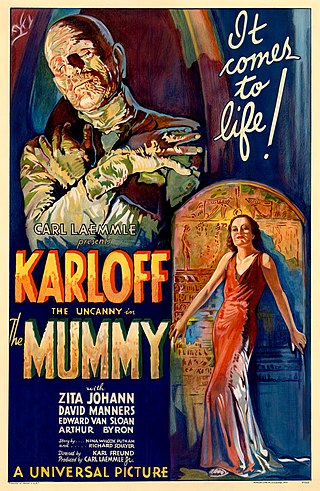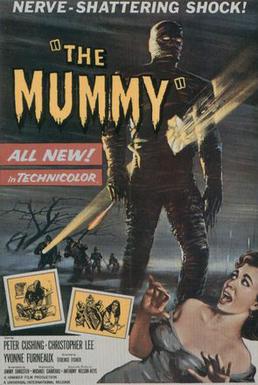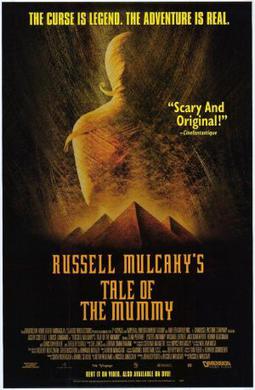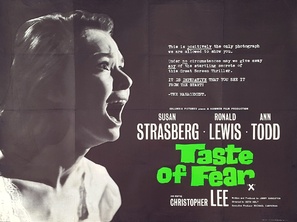Hammer Film Productions Ltd. is a British film production company based in London. Founded in 1934, the company is best known for a series of Gothic horror and fantasy films made from the mid-1950s until the 1970s. Many of these involve classic horror characters such as Baron Victor Frankenstein, Count Dracula, and the Mummy, which Hammer reintroduced to audiences by filming them in vivid colour for the first time. Hammer also produced science fiction, thrillers, film noir and comedies, as well as, in later years, television series.

The Mummy is a 1932 American pre-Code supernatural horror film directed by Karl Freund. The screenplay by John L. Balderston was adapted from a treatment written by Nina Wilcox Putnam and Richard Schayer. Released by Universal Studios as a part of the Universal Classic Monsters franchise, the film stars Boris Karloff, Zita Johann, David Manners, Edward Van Sloan and Arthur Byron.

The Mummy is a 1959 British horror film, directed by Terence Fisher and starring Peter Cushing and Christopher Lee. It was written by Jimmy Sangster and produced by Michael Carreras and Anthony Nelson Keys for Hammer Film Productions. The film was distributed in the U.S. in 1959 on a double bill with either the Vincent Price film The Bat or the Universal film Curse of the Undead.

Tales from the Darkside: The Movie is a 1990 American comedy horror anthology film directed by John Harrison, serving as a spin-off of the anthology television series Tales from the Darkside. The film depicts the frame story of a kidnapped paperboy who tells three stories of horror to the suburban witch who is preparing to eat him.

Dracula is a 1958 British gothic horror film directed by Terence Fisher and written by Jimmy Sangster based on Bram Stoker's 1897 novel of the same name. The first in the series of Hammer Horror films starring Christopher Lee as Count Dracula, the film also features Peter Cushing as Doctor Van Helsing, along with Michael Gough, Melissa Stribling, Carol Marsh, and John Van Eyssen. In the United States, the film was retitled Horror of Dracula to avoid confusion with the U.S. original by Universal Pictures, 1931's Dracula.

Tale of the Mummy is a 1998 adventure horror thriller film directed by Russell Mulcahy. The film stars Jason Scott Lee, Jack Davenport, Louise Lombard and Christopher Lee.

The Curse of Frankenstein is a 1957 British horror film by Hammer Film Productions, loosely based on the 1818 novel Frankenstein; or, The Modern Prometheus by Mary Shelley. It was Hammer's first colour horror film, and the first of their Frankenstein series. Its worldwide success led to several sequels, and it was also followed by new versions of Dracula (1958) and The Mummy (1959), establishing "Hammer Horror" as a distinctive brand of Gothic cinema.

Dracula Has Risen from the Grave is a 1968 British supernatural horror film directed by Freddie Francis and produced by Hammer Film Productions. It is the fourth entry in Hammer's Dracula series, and the third to feature Christopher Lee as Count Dracula, the titular vampire. The film stars Rupert Davies as a clergyman who exorcises Dracula's castle, and in doing so, unwittingly resurrects the Count back from the dead.

Frankenstein Must Be Destroyed is a 1969 British horror film directed by Terence Fisher for Hammer Films, starring Peter Cushing, Freddie Jones, Veronica Carlson and Simon Ward. The film is the fifth in a series of Hammer films focusing on Baron Frankenstein, who, in this entry, terrorises those around him in a bid to uncover the secrets of a former associate confined to a lunatic asylum.

The Evil of Frankenstein is a 1964 film directed by Freddie Francis. The third instalment in Hammer's Frankenstein series, it stars Peter Cushing, Sandor Elès and Kiwi Kingston.

Kiss of the Vampire is a 1963 British vampire film made by the film studio Hammer Film Productions. The film was directed by Don Sharp and was written by producer Anthony Hinds, credited under his writing pseudonym John Elder.

The Brides of Dracula is a 1960 British supernatural horror film produced by Hammer Film Productions. Directed by Terence Fisher, the film stars Peter Cushing, David Peel, Freda Jackson, Yvonne Monlaur, Andrée Melly, and Martita Hunt. The film is a sequel to the 1958 film Dracula, though the character of Count Dracula does not appear in the film, and is instead mentioned only twice. Christopher Lee would reprise his role as Dracula in the next film in the Dracula series, Dracula: Prince of Darkness (1966).

Nosferatu the Vampyre is a 1979 gothic horror film written and directed by Werner Herzog. It is set primarily in 19th-century Wismar, Germany and Transylvania, and was conceived as a stylistic remake of F. W. Murnau's 1922 German Dracula adaptation Nosferatu. The picture stars Klaus Kinski as Count Dracula, Isabelle Adjani as Lucy Harker, Bruno Ganz as Jonathan Harker, and French artist-writer Roland Topor as Renfield. There are two different versions of the film, one in which the actors speak English, and one in which they speak German.

The Curse of the Mummy's Tomb is a 1964 British horror film produced, written and directed by Michael Carreras, starring Terence Morgan, Ronald Howard, Fred Clark and introducing Jeanne Roland.

The Hills Have Eyes Part II is a 1985 American horror film written and directed by Wes Craven. The film stars Tamara Stafford, Kevin Spirtas, John Bloom, Michael Berryman, Penny Johnson, Janus Blythe, John Laughlin, Willard E. Pugh, Peter Frechette and Robert Houston. The Hills Have Eyes Part II is the sequel to the 1977 film. The film was produced by Barry Cahn, Jonathan Debin, and Peter Locke.

Captain Kronos – Vampire Hunter is a 1974 British swashbuckling action horror film, written and directed by Brian Clemens, produced by Clemens and Albert Fennell for Hammer Film Productions, and starring Horst Janson, John Carson, Shane Briant, and Caroline Munro. The music score was composed by Laurie Johnson, supervised by Philip Martell. Belatedly released on 7 April 1974, the film was intended as the first in a series focused on the title character and his companions. Due to the film's violence and sexual subtext, Captain Kronos was rated R in North America. This was Clemens' only film as a director.

Taste of Fear is a 1961 British thriller film directed by Seth Holt. The film stars Susan Strasberg, Ronald Lewis, Ann Todd, and Christopher Lee in a supporting role. It was released in the United States as Scream of Fear.

Waxwork is a 1988 American comedy horror film written and directed by Anthony Hickox in his directorial film debut and starring Zach Galligan, Deborah Foreman, Michelle Johnson, David Warner, Dana Ashbrook, and Patrick Macnee. It is partially inspired by the 1924 German silent film Waxworks.

The Loved Ones is a 2009 Australian horror film written and directed by Sean Byrne in his feature directorial debut. It stars Xavier Samuel, Robin McLeavy, Victoria Thaine, Jessica McNamee, Richard Wilson, and John Brumpton. The film follows a teenage boy who finds himself at the mercy of a classmate's demented party after he declines her offer to attend the school dance.
Frankenstein is a British horror-adventure film series produced by Hammer Film Productions. The films, loosely based on the 1818 novel Frankenstein; or, The Modern Prometheus by Mary Shelley, are centered on Baron Victor Frankenstein, who experiments in creating a creature beyond human. The series is part of the larger Hammer horror oeuvre.


















